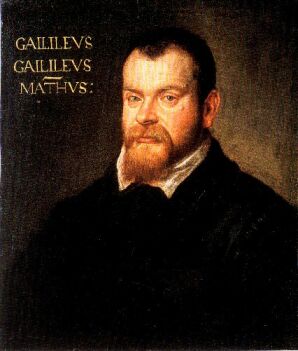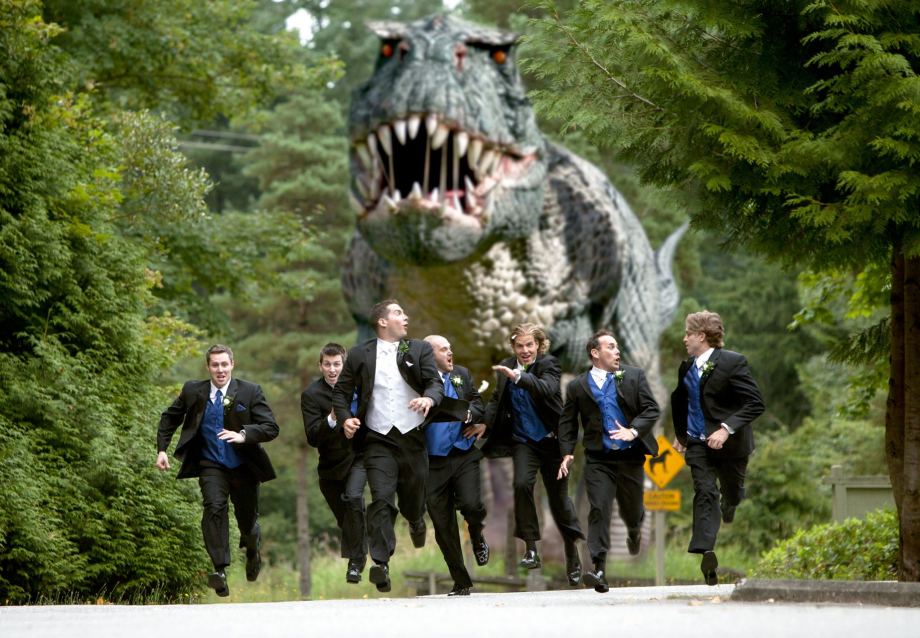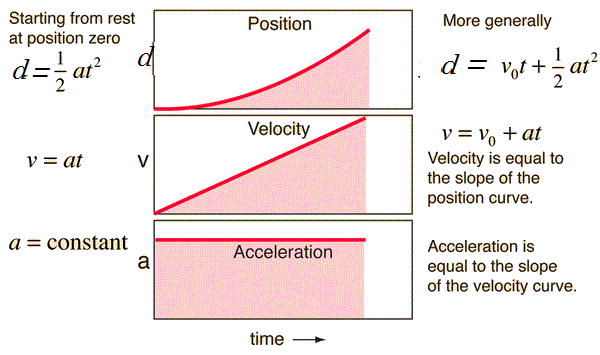
• In physics we are interested in the instantaneous velocity v, which is the velocity of an object at a particular instant of time. VELOCITY IS A VECTOR, that is, it has both a magnitude (amount) and direction, like 20 meters per second North.

• The concept of vector
addition is used to understand how the velocity
varies. If we know the change Δv then we use vector
addition to find the new velocity
• The direction of the acceleration vector a is
the same as the direction of the velocity change vector Δv
in the limit as the time interval considered goes to zero!
• Consider linear motion. If you have a plot of the distance covered, d as a function of time t, then the instantaneous velocity is just the slope of the curve d(t) at any point in time.
• Very important case, first studied by Galileo: motion with constant acceleration.

• Physicists use units and dimensions that are often very, very far from the pre-scientific measures still preserved in everyday life. The unit of speed and velocity is meters per second. The unit of acceleration is meters per second per second, usually written as m/s2.